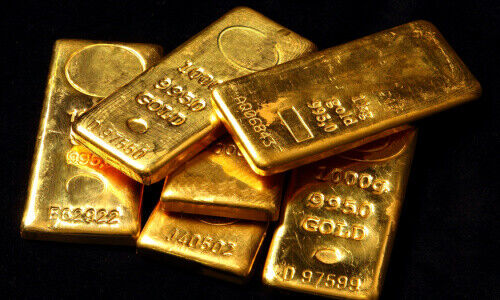Central Bank buying and increased consumer demand lifted gold demand to pre-Covid levels.
With inflation rising sharply, it comes as no surprise that gold demand in the third quarter was 28 percent higher than a year ago. A year-to-date comparison shows an 18 percent increase, returning demand to pre-pandemic levels, according to the latest report from the World Gold Council on Tuesday.
Overall demand for gold was 1,181 tons in the third quarter, with central banks accumulating an estimated 400 tons, which is a record. The Swiss National Bank (SNB) was not among the central banks adding to its gold hoard. While it said it had a valuation loss of 1.1 billion Swiss francs on its gold holdings in the third quarter, the volume was unchanged.
The total supply of gold increased by 1,215 tons, up a marginal 1 percent. Although mining output increased for a sixth consecutive quarter, growth in the current quarter was partly tempered by lower levels of recycling for the period.
Investment Demand
There were countervailing forces for investors as retail investors purchased gold as an inflation hedge, while ETF investors reduced holdings on rising interest rates. Overall investment demand was 47 percent lower in the third quarter than a year ago. While retail investors increased bar and coin investment by 36 percent, ETFs unloaded 227 tons, according to the report.
Global Economy
Despite a slowing global economy, jewelry consumption rose 10 percent to 523 tons. On the flip side, demand for electronics fell, leading to an 8 percent drop in the need for gold in the technology sector.
India was behind much of the demand for jewelry, as «urban consumers were the engine of Indian demand,» with economic activity returning to pre-COVID levels. In China, retail demand firmed as lockdown restrictions were eased in major cities.






























